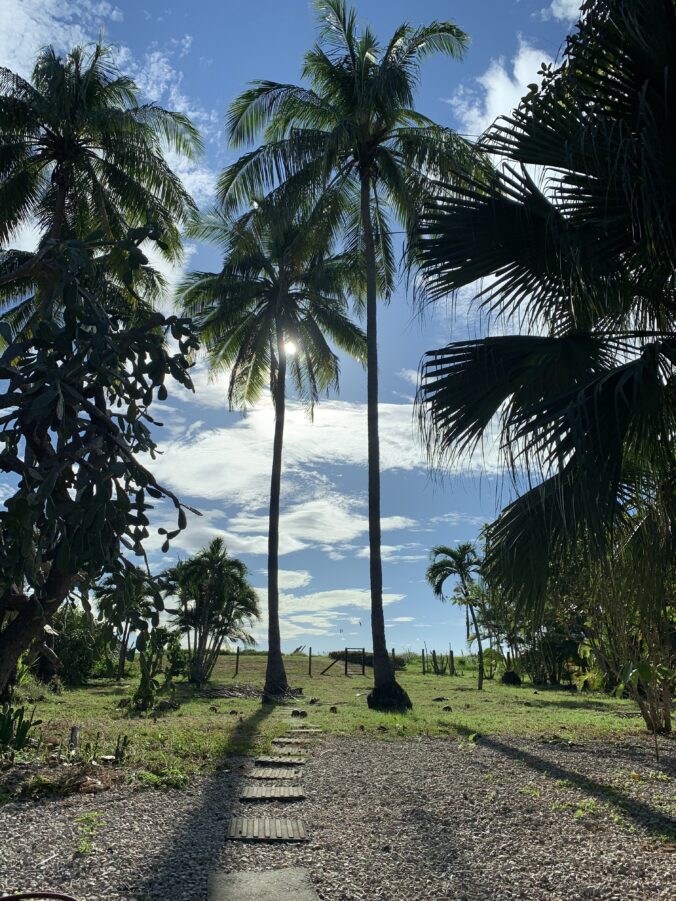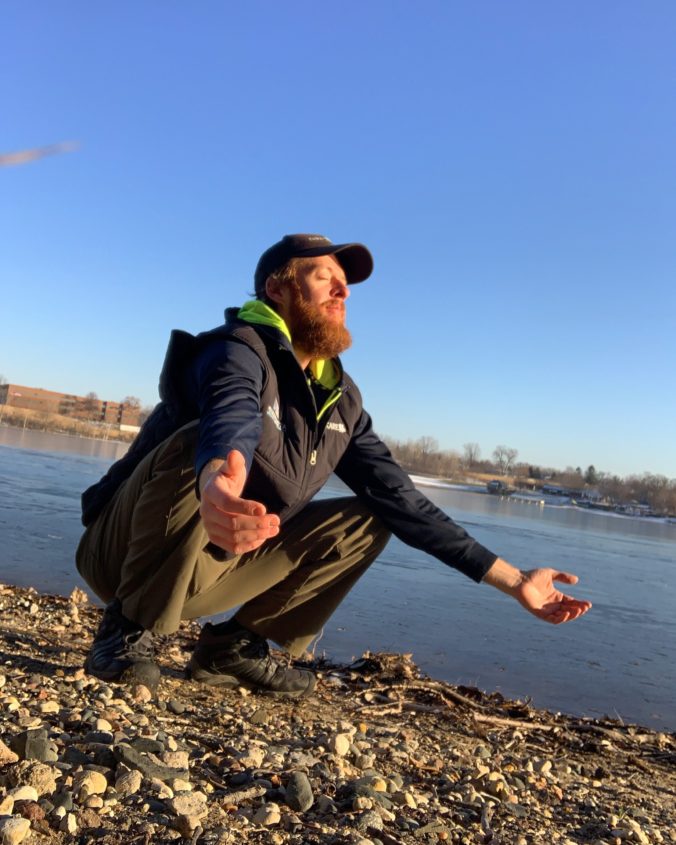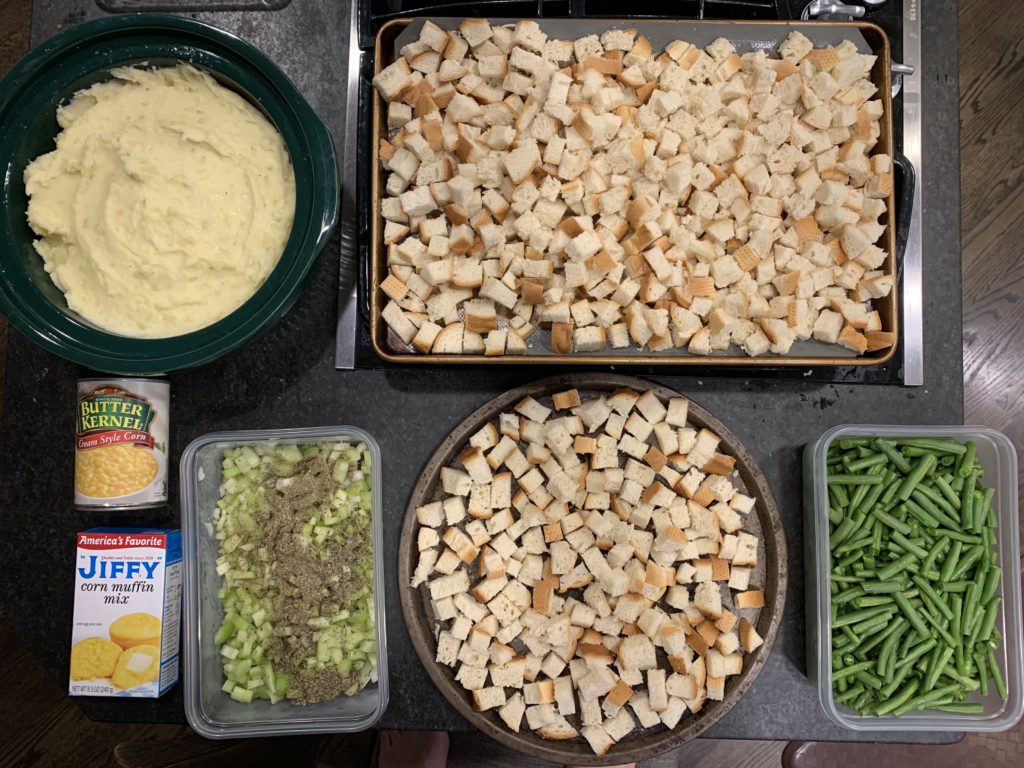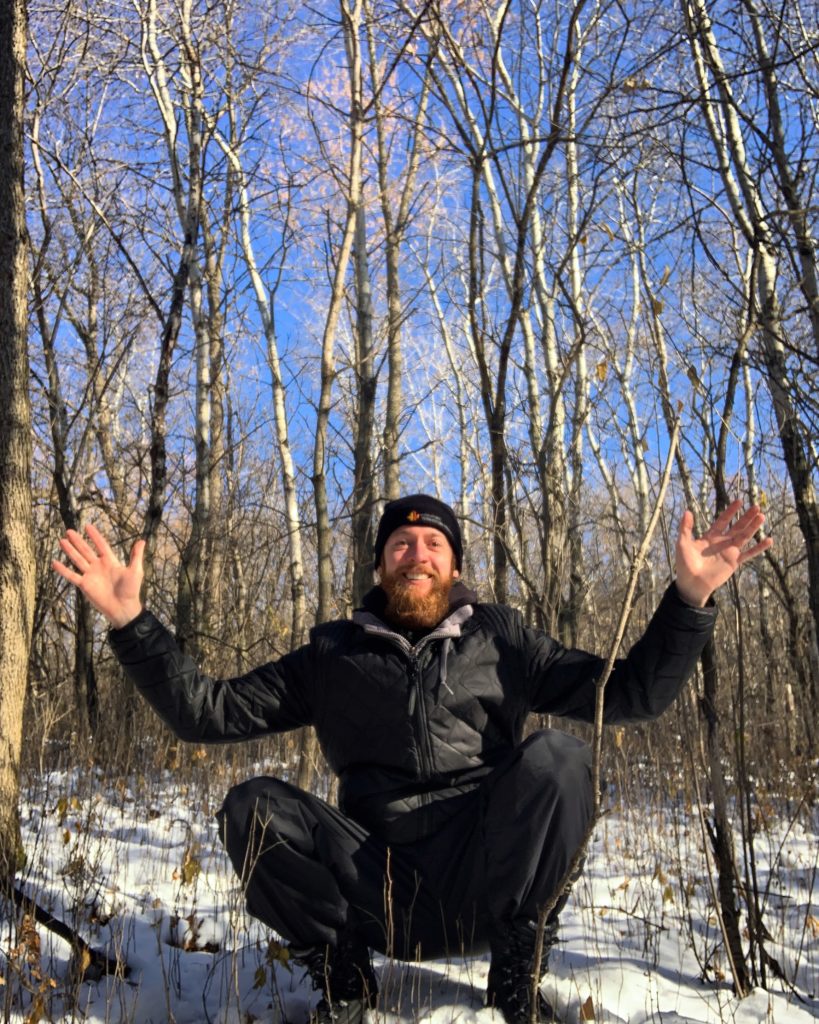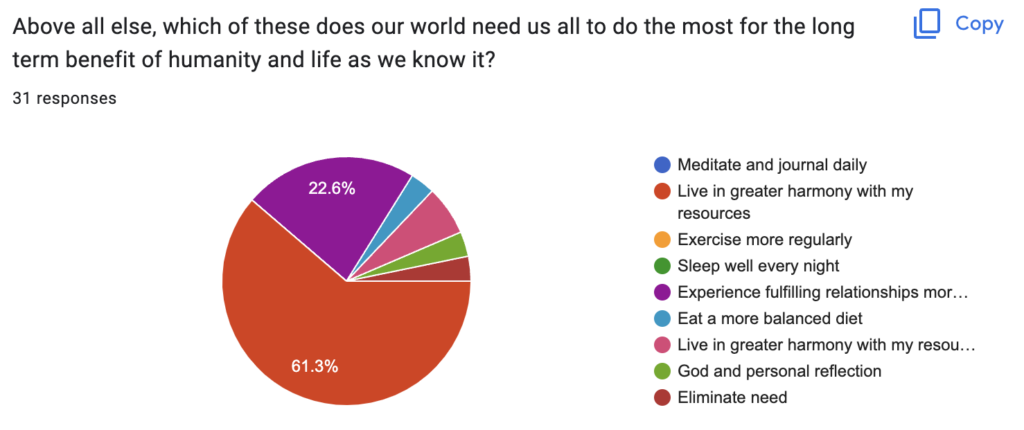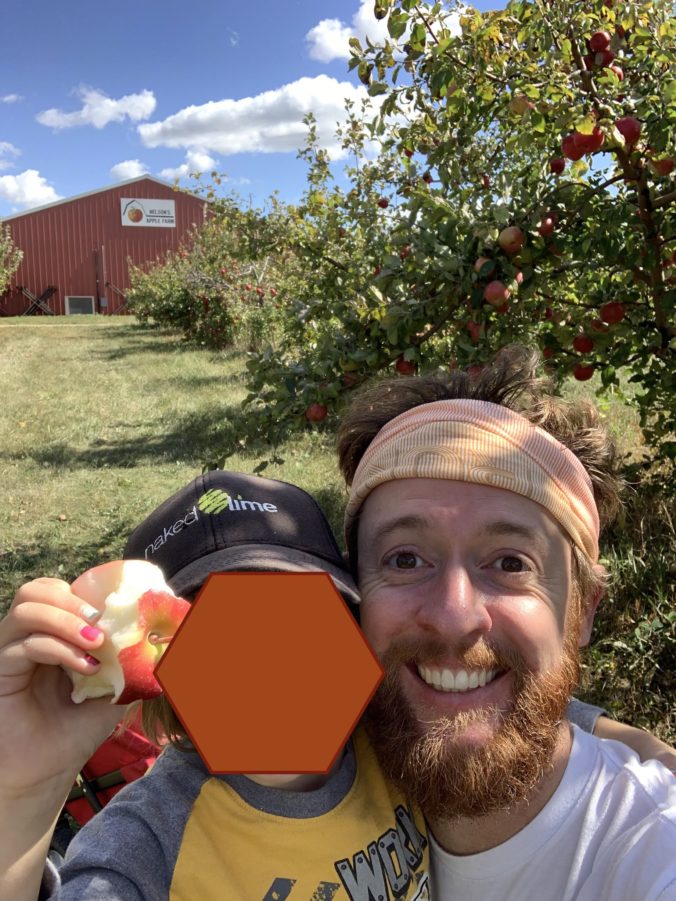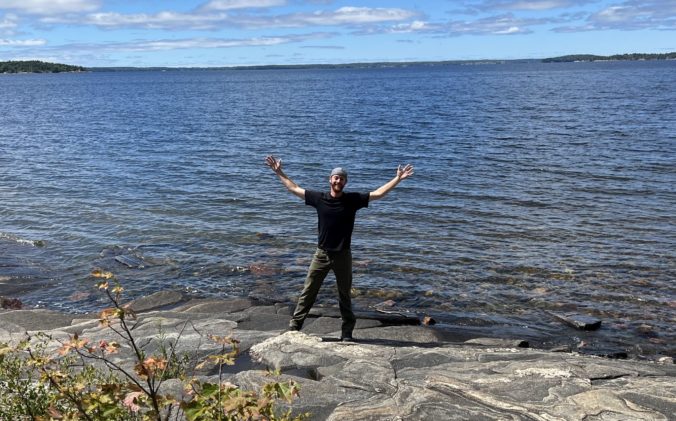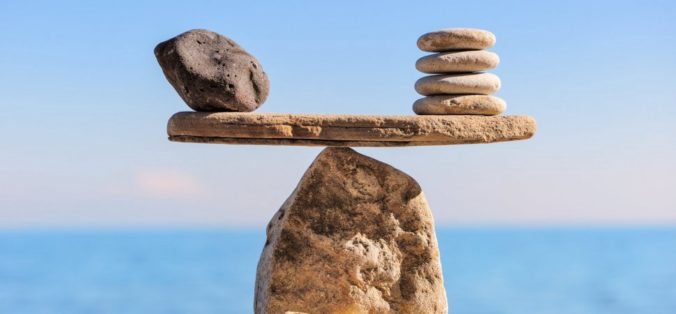We drove many miles.
We connected with family.
We enjoyed poutine.
There’s our 2,220 mile international road trip in a Canadian haiku nutshell, folks.
When the pandemic foiled our plans to visit Canada in 2021, it was a disappointment. Then again, the pandemic was the cause of many disappointments for many people. In the grand scheme, it wasn’t a huge loss. We just kicked the plans back a year. Which, like so many pandemic disappointments, had a big silver lining, because it meant that we got to make the trek while on sabbatical, which meant extra days of fun and not needing to thread the corporate needle of available PTO days!
Being a Canada native, I still have many ties to the country, mostly in Ontario. I moved to Wisconsin when I was five years old, and I lived there through the end of high school. Nearly every summer, though, my parents would take my brother and I on the twelve-hour drive from Neenah, WI to Magnetawan, Ontario, where my mother’s best friend owned a tiny lakeside plot of land in a private campground called Lost Forest Park, or as we affectionately call it – LFP. For a handful of years, we would stay as visitors in our friend’s trailer, but the lot next to our friend became available for sale, and my parents were motivated and able, so they purchased the adjacent lot, and from that moment on, this place has been our family lakeside getaway. Why would we stake a claim to land that was a 12-hour-drive from home? In part, because of all the joyful memories built up there over the years with our friends and other neighbors, and in part because just three hours south of LFP is the greater Toronto area, where many of our extended family still reside. We would often couple the drive to LFP with a tour into the city, to see my grandparents, or cousins, or other friends, or some combination therein. Or, once we had our own trailer in the campground, sometimes those relatives would leave the city for a vacation to come visit us in “cottage country.”
During my college years at the University of Minnesota, I still had the summers “off,” and I did make it back to Ontario a few times. After that, though, life started happening. I was an adult. I started a business. I was living in Minneapolis, which is a 17-hour haul from Magnetawan. As much as I missed that place, it was hard to make time to return. Still, once I met Kristyn, we did make it there once as a pre-child couple, and once again with our fresh, three-month-old firstborn in tow. That most recent visit was six years ago. It was time I made it back to where it all began for me.
And so, we drove. Many miles we drove. Eventually, after the DVD’s borrowed from the Hennepin County Library wore thin from use in the minivan DVD player, we arrived.
Keys to success for long car rides with kids:
- Start early in the day. If you start before sunrise, they can be sold that it’s still nighttime and that we need to sleep for a while.
- Fill a laundry hamper with a variety of books and toys that don’t make noise and get mileage with the kids’ attention. Hand puppets, fidget poppers, sketch pad or LCD writing tablet.
- Save the big guns. Start out with the toy hamper. Once all options have been exhausted, proceed to playing verbal games like “I Spy” or “Find the colors of the rainbow.” Once the appetite for games has run dry, proceed to playing their favorite music. Once voices are tired, should you so choose, then and only then resort to a screen. If you start an 8-hour drive with a screen, you are likely doomed for the tail end of the journey.
- Plan for more time than Google Maps says.
- Before the road trip, train kids how to do an efficient and germ-free “bush wee.” (Thanks Bluey for the lingo.)
- Bring extra hand sanitizer.
- Pack tons of snacks. Then pack a reserve bag of extra snacks. Pack your snacks somewhere you can actually reach them without stopping the vehicle.
- Don’t forget an in-vehicle garbage bag and wipes/napkins.
- If any issues on the road arise, when in doubt, throw some fruit snacks at it. This usually solves the issue.
THE FIRST EIGHT DAYS BY THE LAKE
We spent the first eight days in Canada at my parents’ recently upgraded trailer at LFP. It’s still new to them, and thus very new to me and my family. As we entered the park grounds and made our way down the winding gravel road, trees hugging the shoulderless edges on each side, I could feel a buzzing inside of me. A buzzing of excitement, but also of… familiarity. Comfort. I’ve been here before. I know this place. This place knows me.
Even though many of the structures and people in the park have changed, the land has not. The lake is still there. The beach still has sand. The chipmunks still startle you with their shrill chatter. The pine needles still stick to your foot when you opt to traipse around in bare feet.
We packed a ton of fun activities into these eight days:
- tubing
- wakesurfing
- fire pies and s’mores
- late night card games
- kayaking
- sunset glow-in-the-dark frisbee toss
- jumping, crawling, and floating on the giant “lily pad”
- trampolining
- hammock laying
- late night bonfiring
- made many trips to the dusty old “log” (lodge) to play ping pong, air hockey, foosball, build block towers, and have dance parties
- ate popsicles with our toes in the water
- calmed down for the night by sitting on the end of the dock, watching the sun set with our toes dangling in the cool lake water
THE MAGIC OF RETURNING TO THE SAME PLACE OVER A LONG PERIOD OF TIME
Anyone who has ever traveled away from their home to see a new place they want to see knows – it’s fun and exciting to see new places. And there are those that live in the same place for years upon years of their lives, and those people know the value in staying put, owning your property, becoming familiar with the land, and having a place with years of memories built up.
There’s another kind of magic that gets unlocked when you leave and return to the same place many times over the span of 35 years. I felt this sensation again and again while at LFP, and it is hard to describe.
First, there was part of me that was expecting everything to be like the way it was when I was there as a teenager. I know I’m older now, that I have a family and a whole life in Minneapolis, but it was like I was expecting everyone else to have been frozen in time. What do you mean the neighbor kid that used to be five years old is now graduating high school? How can it be that some of my favorite neighbors no longer own a spot in the park, and haven’t been coming for years, or aren’t even alive anymore?
It’s more than that, though. It’s like a mixture of equal parts comfort and surreality. Comfort of knowing the place, knowing the sights and the smells, but the surreality that it’s no longer the time that is so deeply engrained in my memory. You know how the music you listened to as a teenager stays with your forever? It’s not because the music back then was so much better than it is now; it’s more about how that’s the music you were listening to as you were in the years of building and shaping your true identity. The music gets attached to that. I think a similar imprinting has happened with me at this place.
Part of what I enjoyed about training for a marathon and logging all of those miles on the trails near my house was that it gave me the opportunity to gradually observe the changing of the seasons, the passage of time. One of my favorite patches of trail was running from my house to Bryant Lake and back; the lake served as a sufficient “carrot” to motivate through a longer run, because the view of open water never ceases to revitalize my body and spirit. Depending on the time of year, the trail looks different: in spring I could see right through the bare trees and get a view of the lake 1/4 mile before reaching the beach, whereas in summer with full growth I’d have to make it all the way to the beach before seeing water, and in the fall I enjoyed the awesome reds, oranges, and yellows of the foliage along the way.
Returning to LFP over the years has a similar effect; it unlocks a different, larger way of viewing and processing the passage of time. It gives new meaning to what the concept of “five years” or “twenty years” means to me. It allows me to tap into younger versions of myself, to actually feel the feelings I had felt years ago. Memories, for me, are typically much more about what I did than what I felt. But when I return to this place, which I’ve been to so many times, I do remember the feelings. The feeling of freedom and adventure I would get, being allowed to walk the “roads” of the campground unsupervised (because it is a private and close-knit community). The feeling of anticipation as I’d look out at the lake to see if it was calm enough for an ideal waterski. And I’d especially feel the feels when looking at the sun setting over the western edge of the pine-topped horizon, a view that I’ve drunk in so many times in my 37 years, a view that never gets old. Watching the sun set over that lake now, and the sense of calm and closure of a day well lived that it brings, it’s like I not only get the sense of calm from today’s day, but a larger, deeper, aggregate satisfaction from all my previous sunset watchings combined. Like there’s some extra frequency I could tap into, a parallel timescape that I could touch by standing in the exact same place I’d stood years before, and years before that.
Never underestimate the power of returning to a place in nature from your childhood.
STOKING THE EMBERS OF RELATIONSHIPS
Much like the cool embers of a fire need stoking in order grow back into a warm fire, a relationship that has cooled off over time can also be rekindled. If too much time passes, those embers will be colder. The feelings fade over time, unless you make time for rekindling and reconnection.
This is a notion that came up as I reconnected with old friends and neighbors at LFP – people I hadn’t seen or talked to in six years. It didn’t take long to jump back in to comfortable, friendly chatter, but I realized that, had a few more years gone by, there would’ve been so much to get caught up, it would’ve taken longer to warm back up to each other.
It serves as a reminder that for any relationships I value, I need to make an effort to stoke those embers if I can feel them cooling off.

Reconnecting with longtime friends
GETTING PULLED BEHIND A BOAT AT THE SAME TIME AS YOUR KID
Of all the types of rides one could do, I have to say that getting pulled behind a boat is up there with the best of ’em. Whether you are in an inner tube, on some sort of ski or board, or using your bare old feet, getting pulled behind a boat at speed is as close as most of us get to walking on water. Nothing quite instills the same quality of joy in me as skimming across the top of a calm lake, feeling the smoothness of the water as I slice through it, the wind whipping my air, and soaking in the same lake-top view the loons get to enjoy every day.
So it stands to reason that when I got the chance to get pulled behind a boat, on a circular tube, with each of my kids taking turns to ride the same tube with me, I was an enthusiastic “yes!” The best part about that experience was my view of my kids’ faces. Holding on to the same tube, our faces were mere inches apart. Once they got comfortable going at a speedy clip, I demonstrated a few other ways to lie on the tube (as opposed to on the belly), such as bringing your knees in and crouching on all fours. After lying back down, my kid scooched up on all fours for the first time, and the view I got looking up to that ear-to-ear smile, with wind-strewn hair and nothing but sunny blue sky overhead, knowing that I once felt that same, first-time-tubing joy on this very lake, and getting to be there and share in it with a point blank view of it all… that is a hard moment to top.


HIKE INTO PARRY SOUND WITH KRISTYN
One day my parents treated Kristyn and I to the gift of time; they offered to watch our kids so we could get away for some hours of togetherness between the two of us. Lucky for me, I’m married to someone who, like me, enjoys the simple things in life, so we used our gift of time to seek out the nearest hiking trail for some quality time outdoors, which led us to the North Shore Rugged Hiking Trail in Parry Sound, an inlet of Georgian Bay, which itself is a part of Lake Huron.
We clocked a good number of miles ambling along this not-so-well-marked trail system. Hiking with Kristyn is one of my favorite activities. When you hike with someone else, because you are both moving, and you are both surrounded by nature, and you are not sitting face to face with each other but are moving alongside each other or in a line (i.e. not making direct eye contact), it opens up a new level of conversation and thinking. Movement sparks creativity and insights. The shared rhythm of moving together aligns that energy. It was such an enjoyable few hours of my life, and the only thing I needed was a trail, a water bottle, and my partner.

Kristyn hiking happily
We ended up finding a glorious sit spot with many flat rocks, warm to the touch from soaking in the day’s sunshine. Our shoes and socks came off. The spot was pretty secluded. We stayed. We meditated. It felt like one of those spots you find in nature that you want to make your home and never leave. Eventually, though, the time did come for us to make our way back.

Taking in the view of Parry Sound, ON
The sparsely detailed map we had seen at the trailhead showed the trail went north along the shoreline and eventually hit an end point where you simply turn around and come back south, with a few various pathways all heading the same direction. We had made it to the end of the trail, and as we started to make our way back to the parking lot, we took a few turns we hadn’t taken on the way out. We did this on purpose to explore one of the other pathways we hadn’t seen on our northbound jaunt. We got to the point, though, where the trail started forking in odd ways, higher up into the hillside, with residences becoming visible through the brush. We were still on a system of trails, but it was starting to feel wrong. Some might have said we were lost. Kristyn, unworried about the situation, pointed out, in one of the many conversational sparks of insight one gets while hiking, that, “Getting ‘lost’ is really just having too much attachment to a place that’s not where you are right now.”
From that moment on, any time I feel lost, whether it be a physical, locational lost or a mental feeling of being lost, I will remember this wisdom and fill myself with mindfulness that wherever I am right now is where I need to be.
CHANGE OF PLANS WITH A SILVER LINING
As we approached the end of our planned stay at LFP, an unpleasant surprise developed. We were supposed to go stay with my cousin for two days, and then my aunt and uncle for two days, but the latter group got COVID-19. Boo! They were vaccinated and had mild cases, but it still meant that we could not stay with them for two nights as originally planned. We opted to stay an extra night with my parents and tack on an additional night with my cousin in Stouffville. While it was a bummer to not see them, there was a definite silver lining in that we removed one transition from the itinerary. The first night with kids in any new sleeping arrangement tends to be a bit chaotic, at least for our family, so as things unfolded we were glad to have one fewer “first night in a new place.”
So after one final rainy day at the trailer, we packed up and headed three hours south into the city to stay with my cousin, her husband, and their two boys aged 3 and 1.
CONNECTING WITH COUSINS
I’ve always had a special place in my heart for my three cousins from Mississauga. For the first years of my life, they were my only first cousins, and my brother and I were their only first cousins. Among the five of us, I am the oldest. The next oldest is my cousin Allison, a year and a half younger than I. Because we were (and are) the two oldest, there was always something a little extra magical about our bond. Even though we never lived close to each other, grew up in different countries, and would only see each other on rare family get togethers, it still feels like she is the “sister I never had.” What a treat it was to get our newly formed families together and live under the same roof for a few days!
It was a treat, and it was also mild pandemonium. Anyone who’s been in a house with four kids under the age of 6 knows what I’m talking about.
But truthfully, it wasn’t really pandemonium at all. I was so impressed by these parents of two young boys. They are in the middle of making baba ganoush while also calmly attending to a needy one year old and also having an adult conversation with me. How? I don’t understand. I can’t even make mac and cheese without needing complete silence and eight feet of space around me on all sides.
While the daytime hours were fun, the good times really heated up after the kids got to bed. What I enjoyed most about these few late-night convos with my cousins was that we skipped over common small talk and got right into real talk. What are we striving for as parents? How does one get financially free? Just how different is a Canadian accent to a Minnesotan one? (Hint: if you need to find out the answer to the latter, just put a Canadian and a Minnesotan together and have them both pronounce the sentence, “I left my house to go to a boat conference.”)
I also immensely enjoyed their ritual of evening tea after the kids went down. Not the way I make tea, which is to microwave a mug of water and then toss in whatever tea bag was within closest reach out of the Lazy Susan. No, they made tea. With a kettle. And a teapot. A teapot we would all share. And we drank the tea out of a Turkish tea set (like this). And there were lemon wedges. This all probably took an extra four minutes to prepare compared to my bachelor-style method of tea-making, but the impact of the difference was immense. I could feel a greater sense of bonding, of community with the four us, simply by all sharing tea out of the same pot. We laughed, we cried, we laughed some more, all while sharing in our tea. When the pot emptied, we refilled it. (We did need something to wash down the salt of the ketchup chips.) This was a shared ingestion behavior that I was grateful to take part in and have modeled for me. I’m looking forward to integrating this ritual into my own home. I’m now in the market for a Turkish tea set.
UNLOCKING THE WISDOM OF GREAT GRANDPARENTS
With my cousin’s house as our home base, we ventured into the city of Toronto on two different days to visit each of my grandmothers. It had been years since I’d seen either of them, and I was excited and grateful for the opportunity to introduce my children to their great grandparents.
I also knew that this would be a rare chance for me to have quality face time with my aging grandmas, and on our hour-long drive into the city I considered what I might want to ask them, what knowledge or story did I most desire to selfishly extract and internalize. It dawned on me that the only reason I’m even here is because of the choices they made, because of their successful parenting of their own children. So I decided that no matter where the conversations went, and no matter how distracting our kids were, at some point in each visit, I was going to ask each of them, “When you think back to when you were raising your kids, or even as you look back with hindsight, what kind of parenting philosophies or strategies did you use? What do you think to be the most important things in raising children? What should I do with my kids?”
Their answers astonished me. Not because of what they said, but because both my paternal grandmother and my maternal grandmother said virtually the exact same thing.
The one answered my query with a more thorough response: “Let children be their individual selves, whatever that means. Resist the temptation to compare one child to the other. We are all different, with different strengths and skills, no matter how ‘equal’ or ‘fair’ the parents may try to raise them. One kid might need more affection, where another might need more movement and rough play. Give kids what they need even if it means one needs ‘more’ than the other. ‘Fair’ isn’t always fair.”
The other grandma, upon hearing my question, answered without hesitation: “Let them be. Just let them be.”
When my second grandma uttered those words, it hit me like a ton of bricks. It sounded so similar to the first response. And, my grandmas are right. By the time kids get to be 4-5 years old, they really don’t need much help anymore. They want to do things for themselves. They don’t want to be taught – they want to do. They don’t need to be corrected – they will end up figuring it out on their own. It’s my job to keep them safe and then get out of their way. I am deeply grateful to have received this insight and reminder from the elders in my family.
If there’s something you really want to know – ask your elders!
GOING WHERE THE ENERGY FLOWS
We capped off our road trip with a one-night stay at a family friend’s house. They are long-time family friends, they have a great house with a backyard pool, they have two older kids (and our younger kids love playing with older kids), and they live in an area that was on our way home, but none of those are the reasons we made a point to visit them.
We slated one of our road trip days for this visit because of how, over the course of many years, the adults in that family made Kristyn and I feel along the way. We felt cared about. We felt seen. Noticed. Loved. They are the type of people that make sure to send you a note on your birthday, that ask about you when they speak to one of your relatives, that just genuinely seem like they give a rip. So many people today are so busy with their own lives, they don’t make time to look up and stay connected to those close to them (or those that were once close). These folks do. I felt a deep sense of knowing that we needed to make an effort to see these people.
Turns out, I was right. We had a glorious day. The kids paired off nicely and entertained each other while the adults got to sip and chat (which is usually the goal, is it not?).
Two of my favorite quotes from this 24-hour visit:
Adult, while playing a late-night card game, a tad frustrated after losing several hands in a row, and then losing the next one because of having taken too many tricks, but it was actually her low cards that had won the tricks and the high cards had not – “F*@!, that’s not how I thought I would be angry!”
6 year old to 11 year old, who have never met each other, while standing next to the diving board – “Should we hold hands and jump off that?” They did. <3
IN CONCLUSION
We then drove home by way of Chicago. It was a fairly uneventful two-day drive, which is exactly how I prefer my two-day drives to be.
I am so glad I invested the time and energy into making this trip a reality. You know it’s the sign of a good time when you’re already thinking about when you’ll come back to a place before you leave it. Until next time, Canada!
